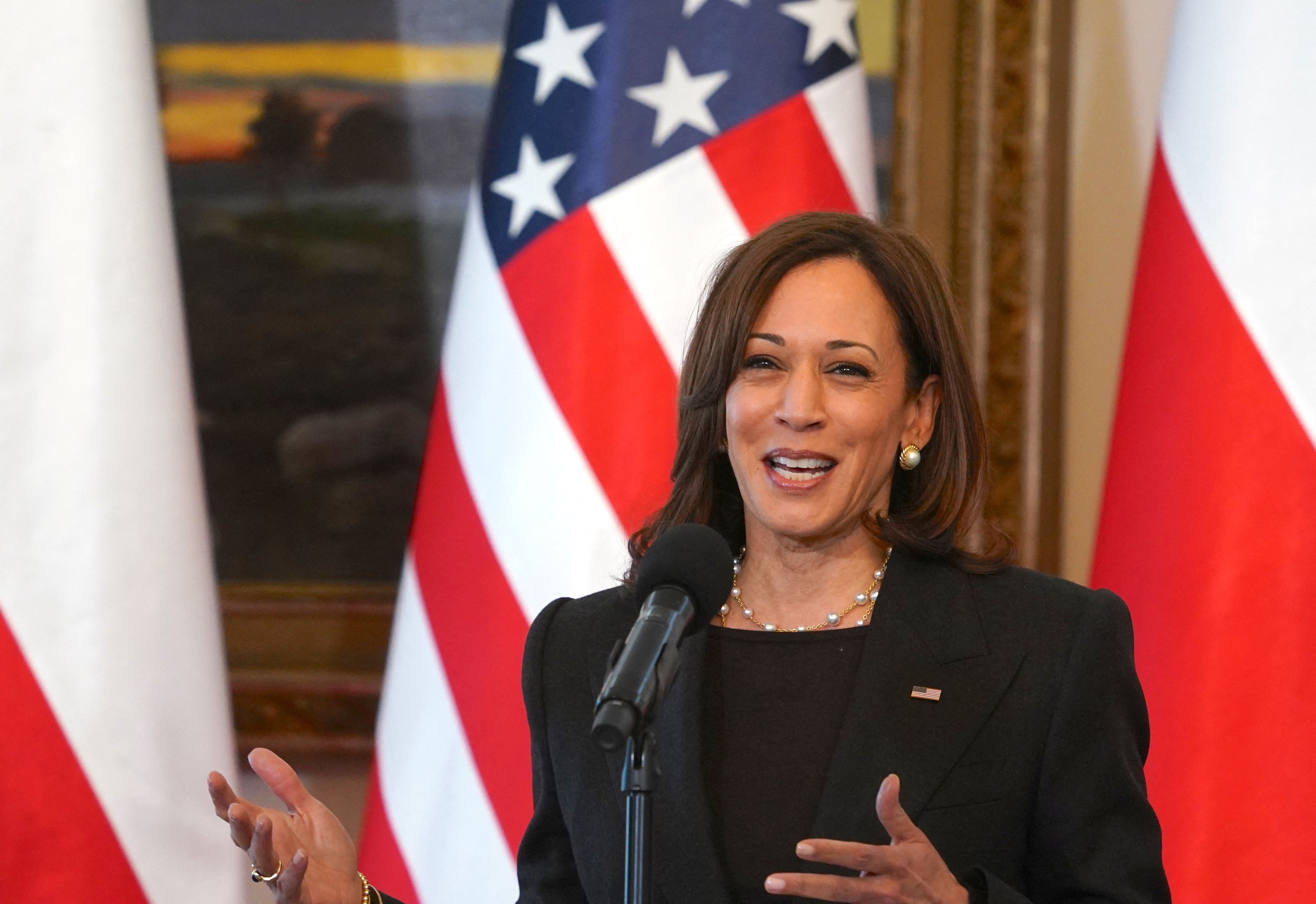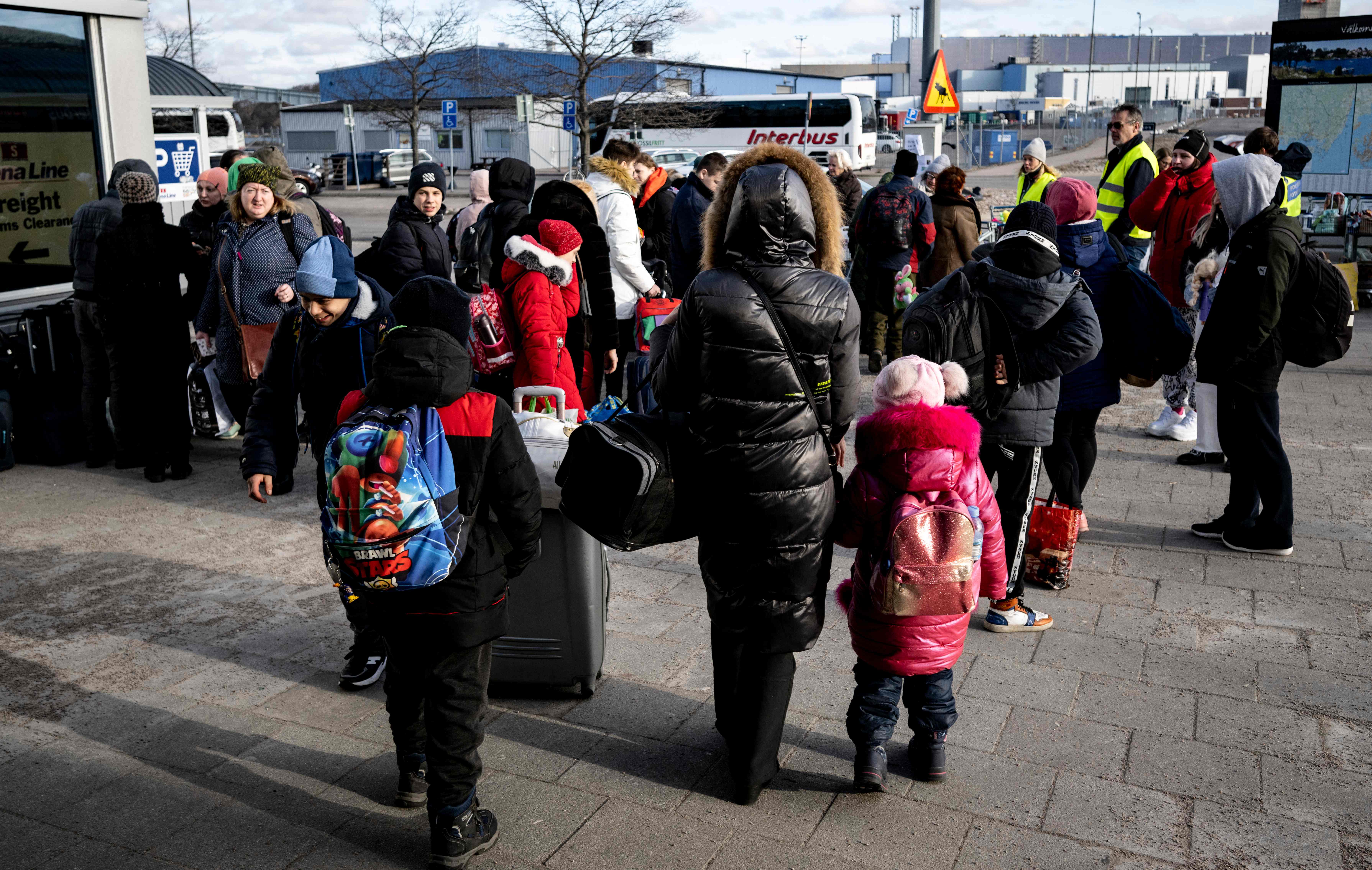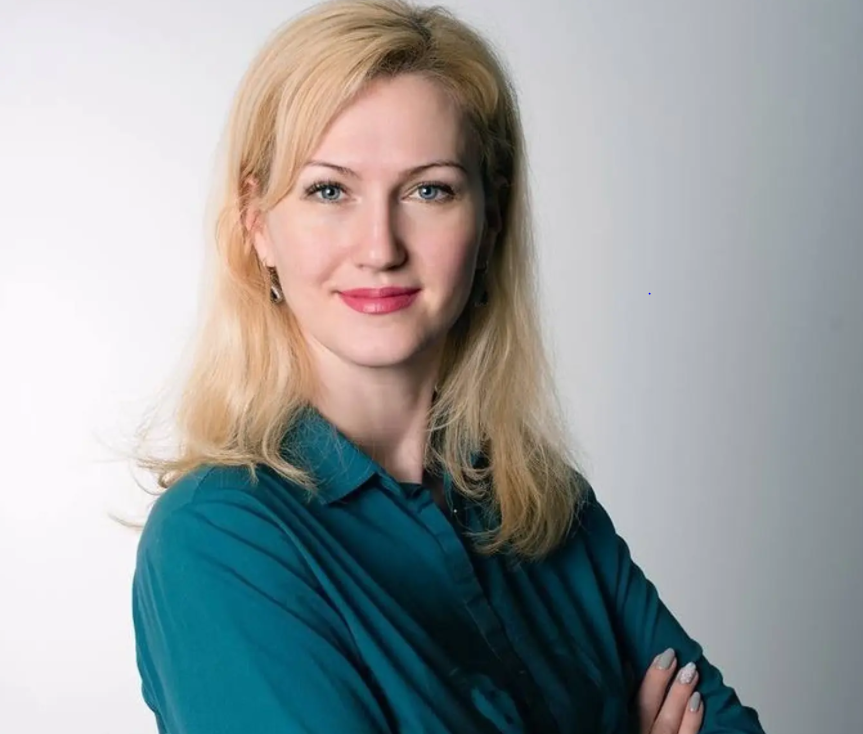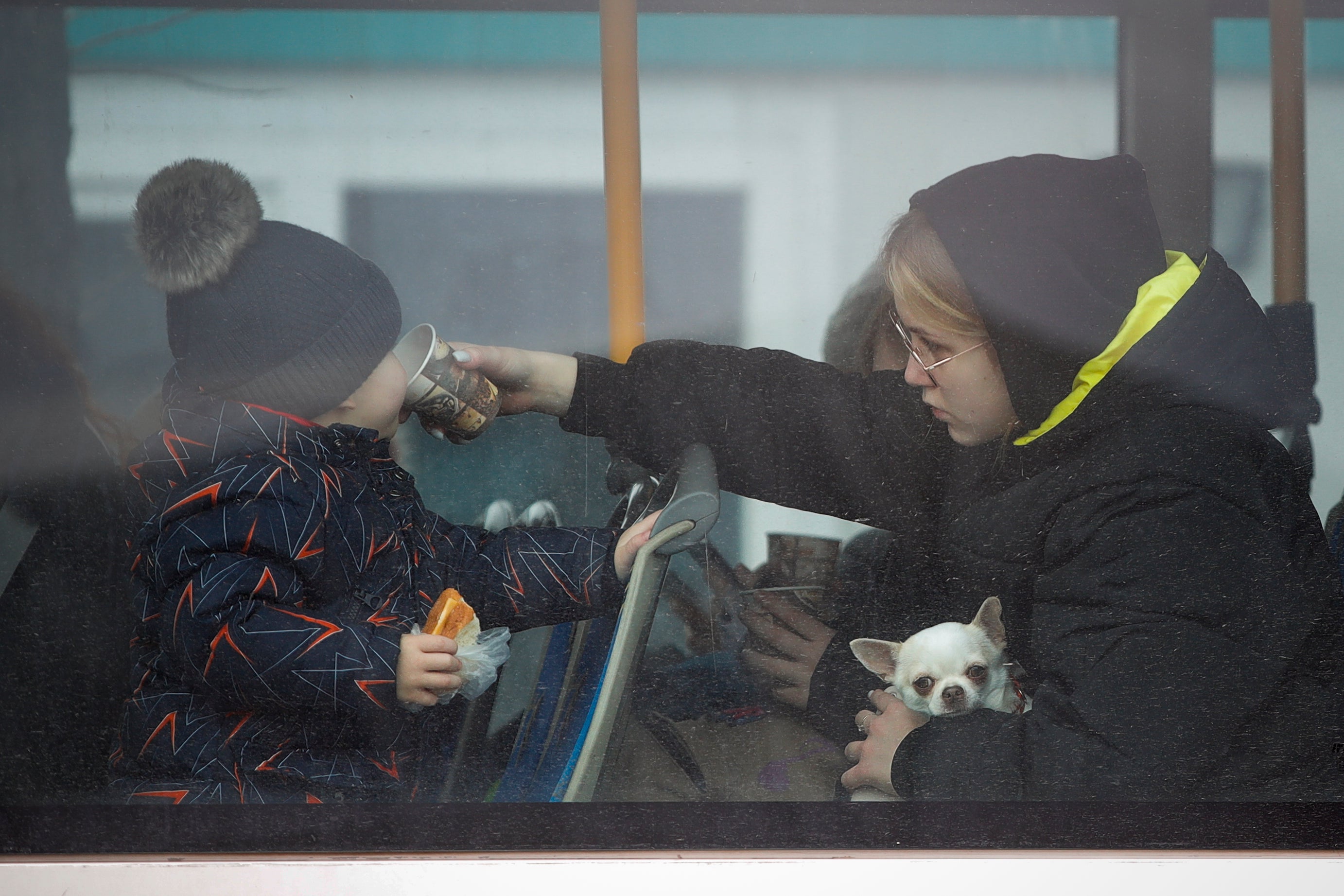
More than 2.3 million refugees have left Ukraine in the two weeks since Russia invaded its neighbour – a number that officials have said could rise to 4 million within a matter of days.
UN figures reveal that Poland has welcomed over 1.4 million refugees, while other European countries have taken in more than 250,000.
Efforts from the US meanwhile have been nominal – with so few Ukrainians taking refuge in the country that the numbers aren’t even tallied in the UN’s database.
In recent days, Joe Biden’s administration has made several statements pledging support for Ukrainian refugees – but is yet to back them up with concrete action in terms of immigration policies.
On Thursday, Poland’s President Andrzej Duda called on the US to “speed up” the processing of Ukrainian refugees who have relatives already living in the US.
Speaking alongside Vice President Kamala Harris at a press conference in Warsaw, he warned that without more help from Western allies “this will end up in a refugee disaster”.
Ms Harris said the US would support Poland with its “burden” and unveiled more financial support for refugees but remained evasive around whether the US will accept Ukrainians who evacuated from their country.
“The United States is absolutely prepared to do what we can and what we must to support Poland, in terms of the burden that they have taken on,” she said.
When pressed around whether the US would “make a specific allocation for Ukrainian refugees,” the vice president laughed nervously and refused to commit either way, brushing off the question with: “A friend in need is a friend indeed.”
The same day, White House Press Secretary Jen Psaki claimed that the “best way” the US can help the refugee crisis is by funding the neighbouring countries taking in Ukrainian evacuees, saying that the “vast, vast, vast majority of refugees” want to stay in Europe.
“The vast, vast, vast majority of refugees we believe will want to stay in neighbouring countries in Europe where many of them have family, many of them have worked, many of them have friends and others – that is our assessment,” she said at her press conference.
Despite these claims, reports have emerged of Ukrainians wanting to join family members already living in the US – but being refused entry by US officials.
Here’s how the US can do more to support Ukrainian refugees:
Reunite Ukrainians with relatives in the US
With around 350,000 Ukrainian immigrants currently live in the US, according to US Census estimates, for some Ukrainian refugees their closest family members and support networks are based in America.
Maryna Seifi, a Ukrainian-American living in California, told CBSthat she flew to Poland to meet her two teenage relatives, 19 and 16, as they escaped from Odesa and crossed the Ukrainian border.
She said that they all reunited in Przemyśl and went to the US Embassy where they were told that the two teens were not allowed to fly to the US.
“They have no sympathy, no understanding. Even when I say I’m an American citizen that wants to take my kids,” she said.
The US State Department currently has no exceptions for Ukrainians wanting to join their family members in America, with Ukrainians only being considered for US resettlement if the countries they have fled to are deemed to be unsafe. As Poland is not, families like Ms Seifi’s are unable to stay together.

Greg Siskind, an immigration lawyer and founder of Siskind Susser Immigration Lawyers, told The Independent that it has been “extremely frustrating” for US citizens and permanent residents who are trying to bring their Ukrainian relatives to their homes in America.
“There has been no communication from the State Department and no accommodations for them,” he said.
“All the US has said is that Ukrainians are now stateless so they can be processed in other consulates.”
Ukrainians would need to get a visa appointment at the consulate and, at the moment, there are backlogs for many months.
“The big problem is the consular system is so broken that most still haven’t resumed routine operations after Covid,” he said.
Set up a special parole program
President Biden has the power to provide an instant solution to this problem by setting up a special parole program that would allow Ukrainian refugees with close family members in the US to enter the country on a temporary basis, Mr Siskind told The Independent.
“It would be an aggressive use of section 212D – parole authority to the president – where the president has the authority to let anyone into the US without a visa for urgent humanitarian or public policy reasons,” he said.
“Biden can do that himself immediately. He could announce that today just for family members.”
Mr Siskind said that such a move would fit with the US’s immigration policies around family reunification.
“A key part of US immigration policy is to reunite immigrant families,” he said.
“So there is no need to even prove a humanitarian aspect - it would be a super easy, fast application process as they would only have to demonstrate that they have close family members in the US.”
Port parole
An even quicker way to welcome Ukrainians into the US would be through port parole.
This would reduce the influx of applications – and therefore the lengthy delays in waiting for a visa appointment – by allowing refugees to skip that step and board an evacuation flight to the US.
Once at a US airport, or another port of entry, Customs Border and Protection (CBP) officers would then make a determination on the spot whether to grant access.
For Ukrainians with family members already in the US, Mr Siskind said that this could be a question of airport officers simply checking their documents for evidence of their relationships to their family members.

Extend Temporary Protected Status
Last week, the Biden administration announced it was granting Temporary Protected Status (TPS) to Ukrainians fleeing from the war.
Under the move, Ukrainians without legal documentation can stay and work legally in the US for 18 months.
Around 75,000 people will be shielded from deportation back to the war zone because of this rule so long as they apply by 28 August.
However, TPS only applies to Ukrainians who were already in the US by 1 March, denying access to the more than one million mostly women and children who have evacuated from the country since then and the thousands that continue to cross the Ukrainian border each day.
This would echo the support from the European Commission which has granted a Temporary Protection Directive (TPD) to Ukrainians, allowing them to stay and work in EU countries if they left the country from 24 February onwards.
People on TPS also can’t necessarily convert their status into US citizenship or permanent residency.
After the 18-month period, the US can extend the TPS for longer and has done so for many countries.
For now though, the president could also redesignate TPS eligibility to change the date so that it applies to Ukrainian nationals arriving into the US after 1 March.
Other than the TPS, the only action taken by the US to make it easier for Ukrainian refugees to enter the country has been the launch of a “trying to be nice memo” from the USCIS, said Mr Siskind, such as forgiving things like missing deadlines on application processes.
Reviving the Lautenberg program
One thing that could also have an immediate impact would be to allow Ukrainians who have applied under the Lautenberg program to travel to America while their applications are still processing.
The Lautenberg Program allows members of certain religious minority groups such as Jews and Evangelical Christians from the former Soviet Union to apply to be reunited with family members already in the US.
Mr Siskind said the program was initially set up to enable around a million people to move out of the former Soviet Union countries, with notable immigrants who moved to the US through the programme including Google cofounder Sergey Brin.
While it still exists today, it is rarely used.
“Reviving the program could make a difference,” said Mr Siskind.
“It could be a way for people who are Jewish and of other religions to come to the US.”

Welcome Ukrainians working for US employees overseas
Over the last two weeks, Mr Siskind said he has heard of several US tech companies who either directly or indirectly employed staff in Ukraine seeking ways to get these team members into America where they can continue with their work for the company.
The Ukrainian mother who was killed alongside her two children while trying to escape from Irpin into Kyiv this week was identified as a Silicon Valley employee.

Tatiana Perebeinis, her son Nikita and daughter Alise were targeted by a Russian mortar blast as they tried to dash across a bridge.
A photo showing the bodies of the family members lying in the road sent shockwaves around the world and has become one of the most harrowing images of Russia’s aggression on innocent civilians.
Ms Perebeinis worked for Silicon Valley tech startup SE Ranking as its chief accountant.
“US employers have been trying to figure out how they can get people like them to the US where they can continue to work,” said Mr Siskind.
“The president can also use a parole program to admit people to the US to continue with their employment focusing on the public policy around labour shortage and helping US companies that are losing critical workers.”
In the short-term, not only does this help Ukrainian refugees flee from the war zone.
But it can also help the US in the midst of its labour shortage and, in the long-term, it could pave the way for permanent residency for Ukrainian workers in the US.
Increase the cap on refugees
The Biden administration has capped the number of refugees the US will accept in the 2022 budget year to 125,000 – not including the 76,000 Afghan refugees who arrived following the country’s withdrawal of troops from Afghanistan.
While this is far higher than the record low of 15,000 set under Donald Trump, the US can increase the cap further to support its European allies in welcoming in some of the more than two million Ukrainians who have left their country in the last two weeks.
Open up the ESTA to Ukrainians
Non-US citizens travelling to the US typically must first get a visa or travel authorisation.
One of the quickest, simplest ways to get authorisation to travel is to apply for an ESTA with Customs Border and Protection (CBP).
The process is automated, typically takes just 72 hours to approve and costs $14 so an increase in applicants from Ukraine should not result in lengthy delays.
However, Ukraine is not on the list of countries on this Visa Waiver Program because the visa denial rate for Ukrainians is far higher than the 3 per cent cutoff to be added to the list.
To get around this, the Biden administration could open up the ESTA to Ukrainians.

Create a special refugee program for Ukrainians
The Biden administration can also create a refugee program for Ukrainians evacuating the country.
However, Mr Siskind said that setting up a refugee program is a “big endeavour” that would take time to set up.
It is also more difficult to be granted asylum or refugee status, as this requires people proving that they are facing persecution, he said.
“Not just that a place is generally dangerous but that you are singled out by a group,” he said.
Supporting Russian refugees
As well as providing better support for Ukrainian refugees, calls are growing for the US to also support refugees fleeing Russia.
Journalists from independent news outlets have fled the country as President Vladimir Putin cracks down on media freedom.
Some experts have suggested that Russian soldiers – many of whom reportedly didn’t know they were being sent into combat and had been told Ukrainians would welcome them – could also be looking for a chance to defect and gain asylum overseas.
“Don’t assume Russian soldiers and officers like what they are doing,” tweeted Duke University economist Timur Kuran.
“Some — we can’t know many, because preference falsification is inherently invisible — must be willing to break ranks, if only they have options. Let EU and NATO countries offer asylum to Russian military defectors.”
Mr Siskind said that a program to fast track refugee status for defecting soldiers would be popular with the US public and Ukrainians - as it would “hurt” the Russian military amid its assault on Ukraine.
The Independent has a proud history of campaigning for the rights of the most vulnerable, and we first ran our Refugees Welcome campaign during the war in Syria in 2015. Now, as we renew our campaign and launch this petition in the wake of the unfolding Ukrainian crisis, we are calling on the government to go further and faster to ensure help is delivered. To find out more about our Refugees Welcome campaign, click here. To sign the petition click here. If you would like to donate then please click here for our GoFundMe page.







